Withlacoochee River System Update - 2/2/2023
Southwest Florida Water Management District sent this bulletin at 02/02/2023 12:42 PM ESTStream Flows Decline from Less Rainfall
Rainfall:
- As February begins, we find ourselves halfway through the dry season.
- Water levels and flows are naturally declining this time of year due to less rainfall.
- Last month our region received 1.4 inches of rain, about half the historical average for January (2.7 inches).
- Since October (last 4 months) we’ve received 7 inches of rain, ironically the same amount that fell in September alone.
- Region-wide aquifer (groundwater) levels are currently in the 55th percentile, still above average, but lower than they were a year ago (75th percentile).
- Flow in area springs is also slowly dropping as aquifer levels naturally decline this time of year from less rainfall.
- The map below shows January rainfall totals only. Most areas were below average last month.

Withlacoochee River (from the Green Swamp downstream past Hwy 200):
- As you move downstream along the Withlacoochee River water levels drop, a requirement for the river to continue flowing downstream.
- River flow is often confused with velocity (how fast an object moves), but flow is a volume of water per time (not a speed).
- This is why river flows increase as you move downstream, since additional tributaries (creeks/streams/ditches) are adding water to the river.
- The source of most flow to the river this time of year is spring/aquifer contributions.
- Over the past couple months, river levels and flows have been steadily declining, which is normal for this time of year.
- On average, the Withlacoochee River dropped about 13 inches in January, while flows decreased by 36% last month.
- The table below compares current river levels and flows to what they were last month and last year.


Cypress Knees Guard the Many Floodplain Swamps the Border the Withlacoochee River (January 2023)

Tsala Apopka Chain of Lakes:
- The Tsala Apopka Lake Chain is a series of 15 named lakes in three distinct pools, connected by canals and separated by water conservation structures (see map below).
- Water levels throughout the lake chain rise and fall each year depending on rainfall and available inflows from the Withlacoochee River.
- The water control structures, aka “locks”, which were closed in early November, remain closed helping to conserve water in the lake chain.
- All three pools are slightly lower than they were this time last year.
- Over the past month, lake levels have dropped several inches as water loss from evaporation and downward leakage has exceeded rainfall amounts.
- The table below shows current water levels, how much they’ve changed in the past month, and how much rainfall each pool received in January.
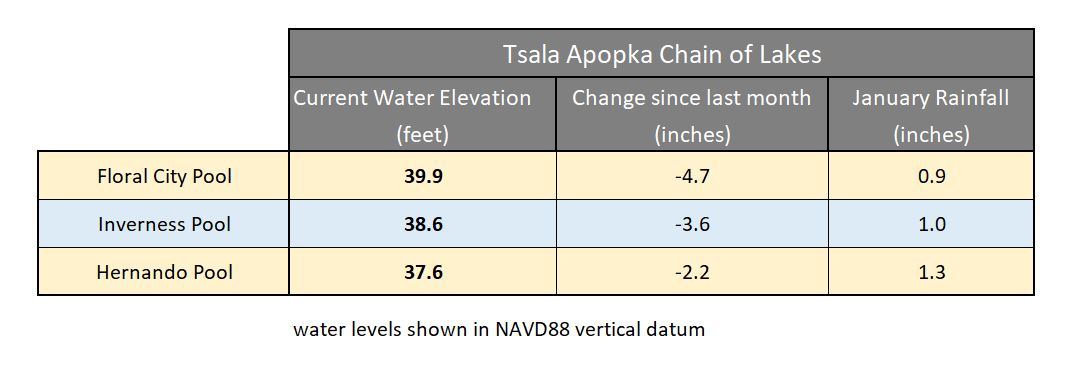
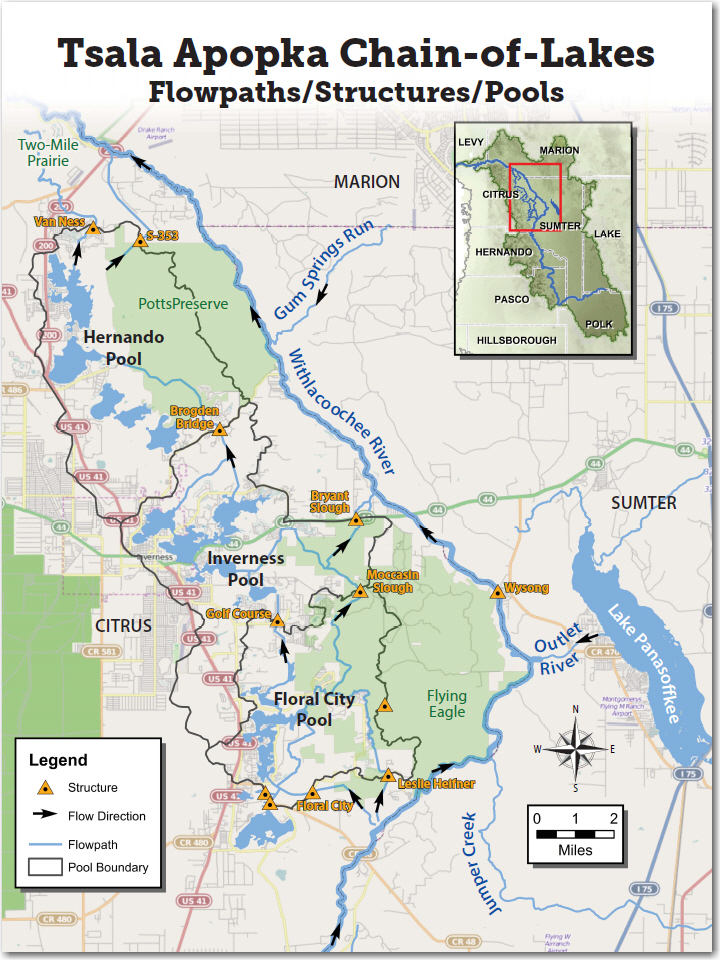
Lake Panasoffkee and Wysong:
- Lake Panasoffkee is a spring-fed lake that receives continuous inflow from Little Jones Creek, Shady Brook, and numerous aquifer connections beneath the lake.
- Water also flows out of the lake year-round, joining the Withlacoochee River upstream of the Wysong water conservation structure.
- Last month, water levels on Lake Panasoffkee fell 2.5 inches.
- Inflows to the lake from Little Jones Creek and Shady Brook decreased by 14% in January.
- Outflows from the lake to the Withlacoochee River declined by 11% over the past month.
- The Wysong structure, which spans the entire Withlacoochee River, remains partially raised.
- District staff routinely monitor conditions on Lake Pan, like dissolved oxygen and sunlight penetration, to ensure healthy conditions.
- Eelgrass coverage is improving, and current oxygen levels are 10 mg/L or greater throughout the lake, which is very high.

District Scientists Monitor Sunlight Penetration in Lake Pan which is Essential for Healthy Eelgrass (February 1, 2023)
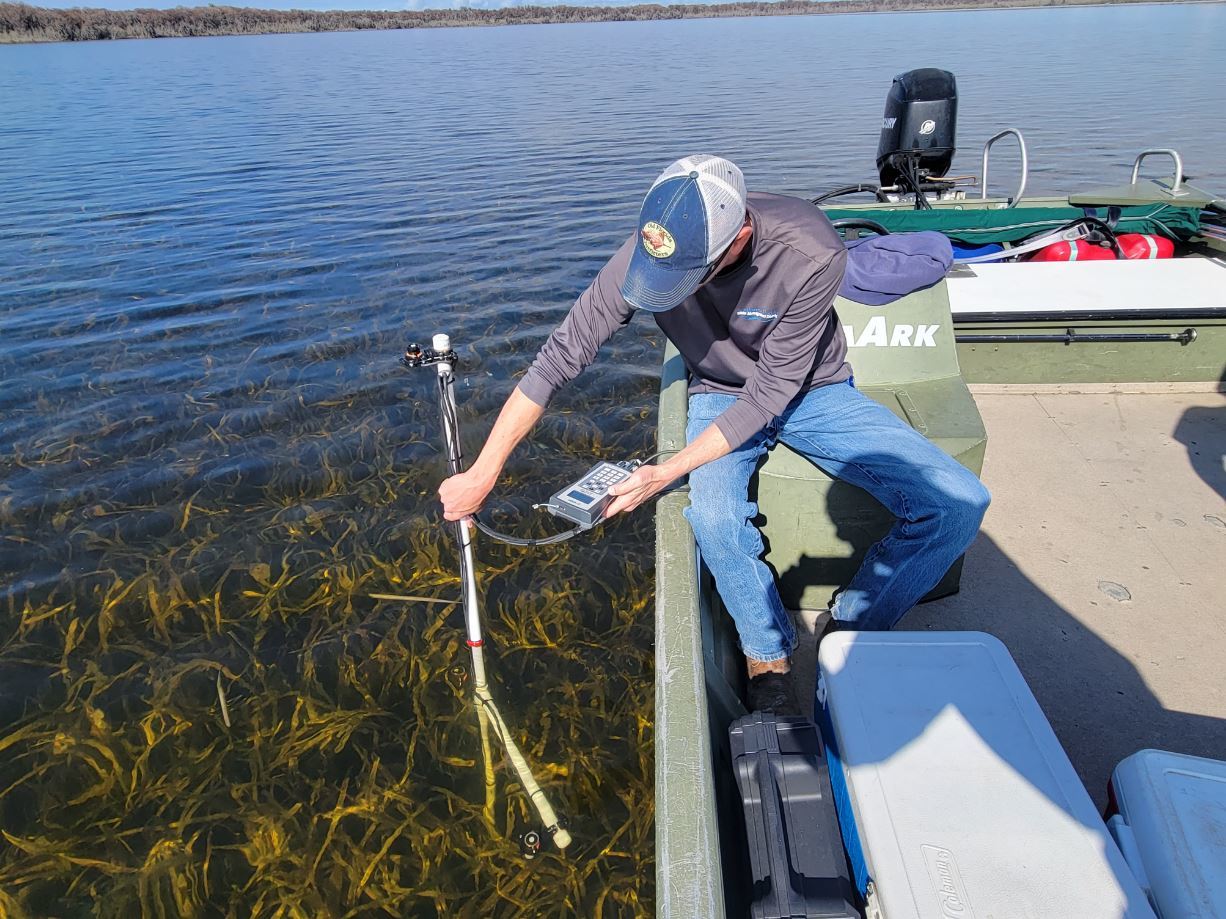
Lake Rousseau and the Lower Withlacoochee River (from Dunnellon to the Gulf of Mexico):
- Downstream from Dunnellon, the Withlacoochee River is influenced by water control structures on Lake Rousseau.
- Inflow to Lake Rousseau includes combined flows from the Withlacoochee and Rainbow Rivers.
- Withlacoochee River flow (which depends on rainfall and runoff from adjacent lands) declined by 25% over the past month.
- Flow in the Rainbow River (which reflects changes in aquifer levels) is 3% lower than it was a month ago.
- Overall inflows to Lake Rousseau are dropping but remain about 6% higher than they were this time last year.
- The Rainbow River is currently contributing 46% of the total flow entering Lake Rousseau.

- The primary outlet from Lake Rousseau is through the Inglis Bypass Spillway to the Lower Withlacoochee River (see maps below).
- The Inglis Main Dam, which discharges excess flows to the Barge Canal, was closed in early January and remains closed.
- All flow is now passing through the Bypass Spillway, which is currently flowing at about 83% of its capacity.
- Over the next few months, upstream flows are expected to continue to decline, causing less freshwater to pass downstream to the tidally influenced Lower Withlacoochee River.

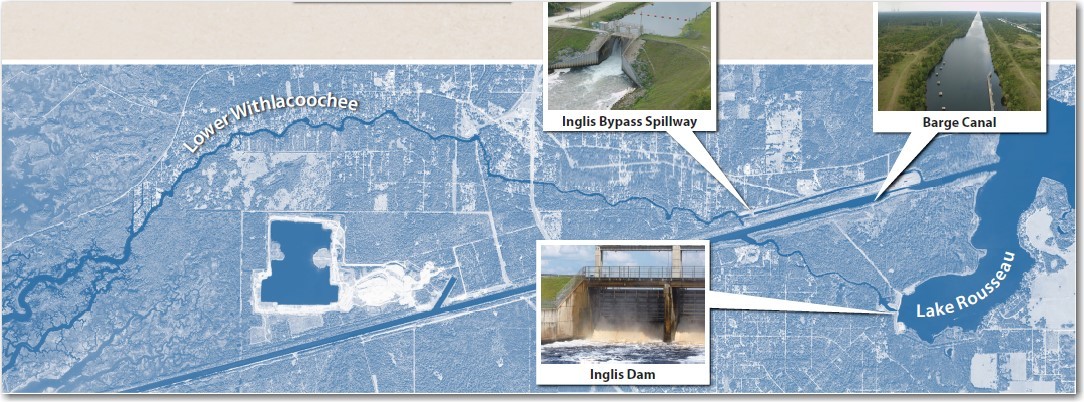
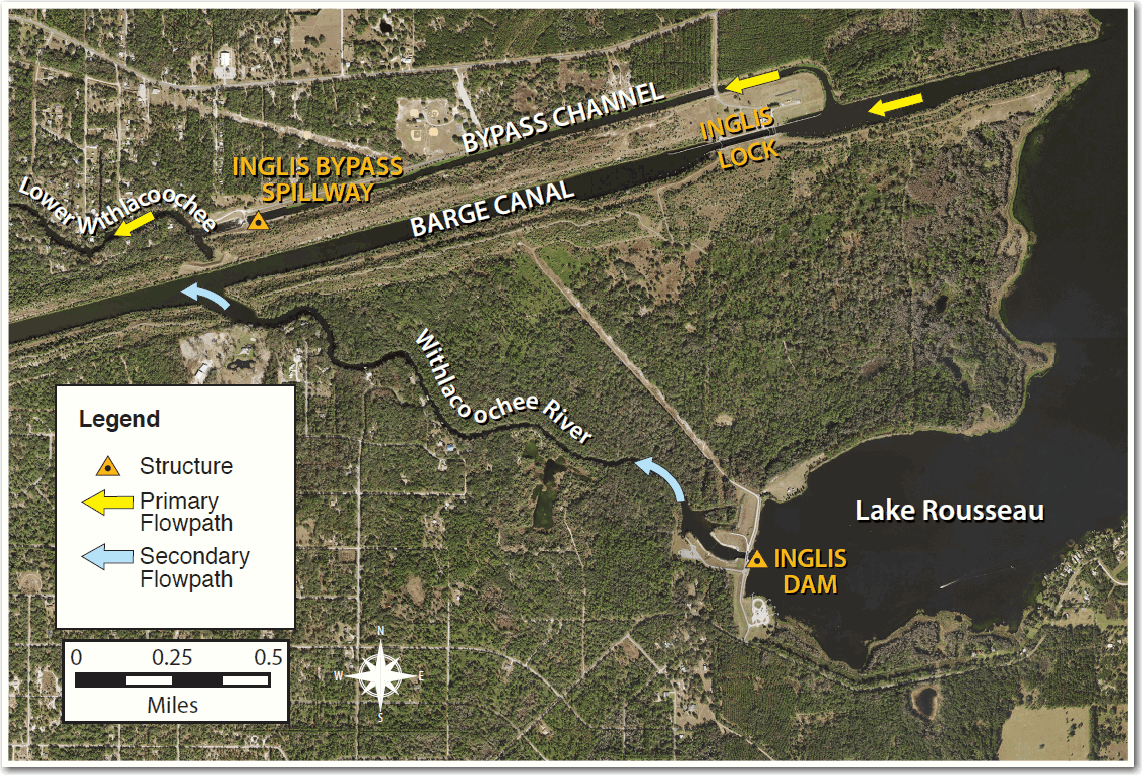
Have a wonderful rest of the week!
Mark
Mark Fulkerson, Ph.D., P.E.
Chief Professional Engineer
Water Resources Bureau
Southwest Florida Water Management District
(352) 269-6073 (office)
(352) 279-4493 (cell)

